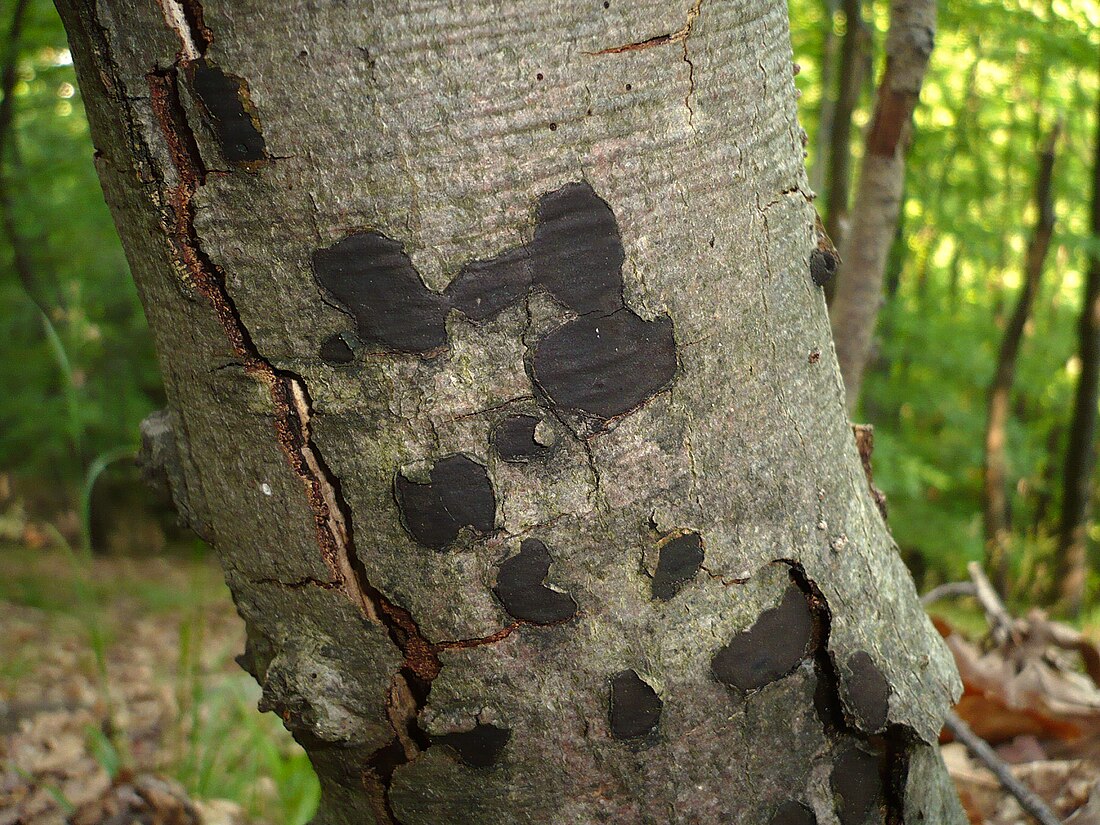Top Qs
Timeline
Chat
Perspective
Biscogniauxia nummularia
Species of fungus From Wikipedia, the free encyclopedia
Remove ads
Biscogniauxia nummularia is a plant pathogen in the family Graphostromataceae, known as the beech tarcrust.[1] The specific epithet is derived from the Latin "nummus" meaning a coin, referring to the often rounded and coin-like encrustations.
Remove ads
Description
The fruit body forms a thick and shiny black crust, on beech (Fagus) bark and is found at all times of the year. It is not edible.[1] Young specimens are covered by a light brown outer layer. The spores are black to dark brown.
- Detail of the tarcrust's structure
- Beech tarcrust growth
- Encrustations on beech bark
Distribution
Biscogniauxia nummularia is a common pathogen specific for Beech trees, and has been recorded throughout Europe and Russia.[2]
Environmental impact
The decline of European beech (Fagus sylvatica) in Sicily and Calabria (Italy) has been linked to B. nummularia and experiments have suggested that this ascomycete plays a primary pathogenic role under certain environmental conditions.[3] It typically causes strip-cankering and general wood decay.[4]
References
Wikiwand - on
Seamless Wikipedia browsing. On steroids.
Remove ads




